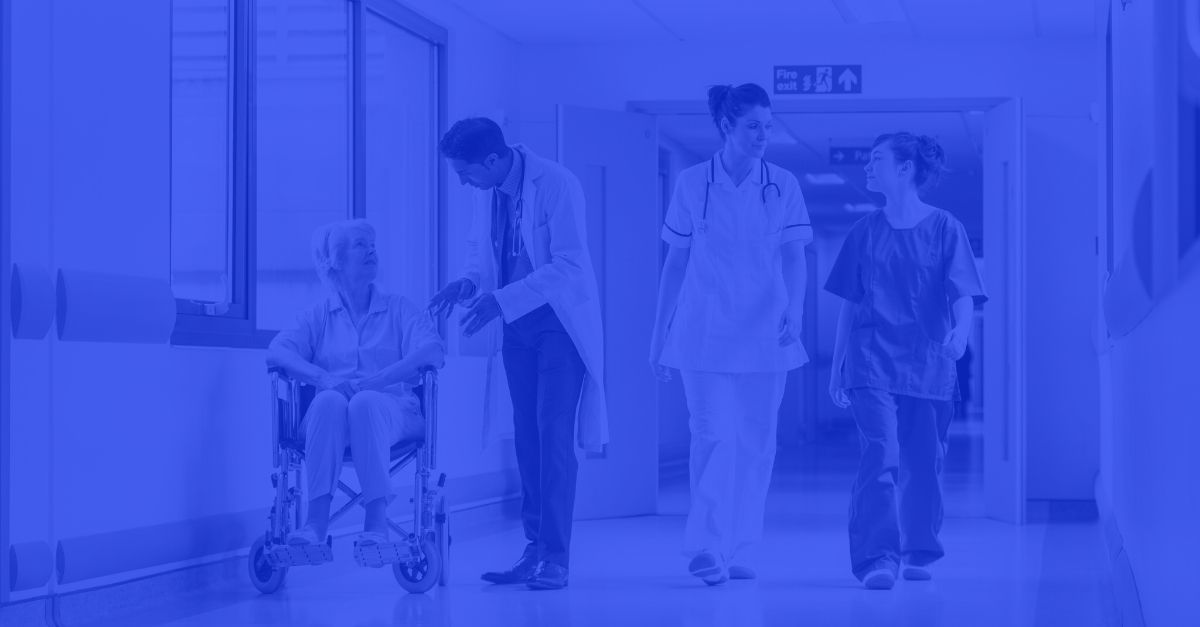@ the LCA each year we produce an annual report of our actions. We have decided to present a public version of our last five years. We want to share with you all our achievements and successes. Of course the public version can only disclose all our public information. If you wish to have access to more deeper and confidential information Join US.
Trulifi by Signify provides Belgian schools with fast, secure and reliable Internet connectivity.
LiFi technology helps Belgian schools to accelerate the digitalization in education. By providing students and staff with fast and reliable access to the latest online tools in a highly secure way.
Signify, the world leader in lighting, is introducing Trulifi by Signify at schools in Belgium to help them accelerate their digital transformation. Trulifi by Signify, which ensures high-speed connectivity through light waves (LiFi) instead of radio waves (WiFi), provides students and teachers fast, secure and reliable access to a broad range of online learning tools, content and other online possibilities.
So far, already four schools in Belgium (three in Wallonia and one in Brussels) have installed Trulifi by Signify, following successful installations in schools in Italy, Germany, the US and the Netherlands. As connectivity is becoming more and more important in education, whether it concerns the use of laptops or tablets, Signify in the past years saw a growing demand for its LiFi systems from schools all over the world. This has helped to accumulate knowledge and experience crucial to taking the nextsteps in implementing this new technology. And now, Trulifi by Signify will support Belgian schools as they take the next step in digitalization.
The Trulifi 6002 system provides the schools with a consistent 220 Mbps download and 160 Mbps data transfer, which is more than sufficient to support the data needs of all students in a classroom. The USB access key – that receives data and sends data back to a transceiver – can be connected to laptop/notebook devices with many different operating systems and is now expanded to tablets as well.
So far, Signify already installed LiFi systems at schools in Brussels, Flobecq and Wanze, and plans to install LiFi systems at a school in Aubange, supporting the government in its ambition to accelerate the digitalization in education.
“In 2019, we installed our first LiFi pilot in a school in Bas-Oha. Now we are thinking about the complete deployment in a classroom to provide the students with all the advantages of this technology,” says Christophe Lacroix, Mayor of Wanze.
“We are especially grateful and proud to be able to test the use of this new technology Trulifi by Signify at our school. Using digital technology today is an integral part of learning tools, but the data security of devices is often questioned,” explains Damien Rubay, School Director at Flobecq.
LiFi is a technology based on line of sight, making it impossible to eavesdrop or hack into the LiFi network from another room or from outside the building, or hinder the wireless communication.
“With LiFi we can provide people with fast, secure and reliable connectivity,” says Olivia Qiu, Chief Innovation Officer at Signify. “This is relevant to any educational facility that seeks to take the next step in digitalization, but just as much for other organizations having the same connectivity needs, including offices, hospitality, industry, transportation.”
Contributing to improvements in education through our LiFi systems is at the core of our commitment to doubling the percentage of our revenues for brighter lives, which benefit society, to 32%. This is part of our Brighter Lives, Better World 2025 program, which was launched in September 2020.
For all these projects, Signify is partnering with LiFi Solutions, a Belgian start-up, active in Belgium and Luxembourg to accelerate awareness about LiFi and to help schools to realize their digital ambitions.
Curious how Trulifi by Signify can benefit your organization? Visit their website.
NavTech deploy LiFi Patient Monitoring Solutions in Hospitals.
Three government-run hospitals in Gujarat have adopted the latest LiFi (Light Fidelity) technology to treat COVID-19 patients and the results have been very impressive.
Ahmedabad based LiFi technology inventor, Nav Wireless Technologies Pvt Ltd has set up LiFi based communication facilities at Civil Hospital (Ahmedabad), Surat Municipal Institute of Medical Education & Research (SMIMER) (Surat) and Gujarat Medical Education & Research Society (GMERS) Hospital, (Vadodara).
Buoyed by the tremendous positive response from the hospital management, medical staff, and patients, the company is exploring more tie-ups other government and private hospitals in Gujarat and neighbouring states like Maharastra, Madhya Pradesh, and Rajasthan.
The company has come forward to provide speedy, accurate, and safer light-based communication for patients and all the medical professionals in this difficult time of the COVID-19 pandemic.
Highlights:
* Ahmedabad based Nav Wireless Technologies Pvt Ltd is the only company in Asia to receive and execute commercial projects in LiFi sector for the healthcare sector
* Nav Wireless Technologies has set up LiFi based Made in India units at three government hospitals in Gujarat; exploring more tie-ups with other government and private hospitals within a state and neighbouring states like Maharastra, Madhya Pradesh, and Rajasthan
* With LiFi technology-based solutions, Doctors and Hospital staff are minimized to the risk of spreading coronavirus infection & at the same time provide a live health data monitoring system
* Patients and medical staff in isolation wards are benefited with a radiation-free communication network
“Considering the rising cases of COVID-19, the hospitals need faster and safer communications to speed up the patients’ treatment and that’s why the isolation wards at three government hospitals in Gujarat have been equipped with the latest LiFi technology. We have set up LiFi based units there which are completely Made in India. LiFi based Centralised Patient Monitoring System without the Internet at COVID-19 wards is helpful to safeguard doctors & the paramedical team at the hospital. We are in talks with other hospitals for installation of such systems to further speed up the treatment of COVID-19 patients,” said Hardik Soni Co-Founder & CTO, Nav Wireless Technologies Pvt Ltd.
“LiFi is a mobile wireless technology that uses light rather than radio frequencies to transmit data. In India, Nav Wireless is the only registered player working on LiFi technology. Also, we are the only company in Asia in the LiFi sector to receive and execute commercial LiFi projects for the healthcare sector. We have successfully installed such a LiFi technology-based communication facility for various government institutions and private premises,” said Pratik Parikh, Head-Global Business Development, Nav Wireless Technologies Pvt Ltd elaborating details.
“In critical care, monitoring is essential to the daily care of ICU patients, as the optimization of a patient’s hemodynamic, ventilation, temperature, nutrition, and metabolism is the key to improve patients’ survival. With this, all the patients and medical staff at isolation wards are able to use a radiation-free communication network without the internet data, connected to hospital instruments such as ventilators, multipara monitors and desktop pulse oxymeter, etc. Furthermore, patients can access video calling facility with the doctors without an internet facility. With LiFi technology-based solutions, Doctors and Hospital Staff are minimized to the risk of spreading coronavirus infection & at the same time provide a live health data monitoring system,” said Vardhan Suthar, Head-Network Architect, Nav Wireless Technologies Pvt Ltd, sharing the technical aspects of the technology.
“GMERS has adopted LiFi technology advantages to protect and live tracking of patients’ data for the best treatment. Constant monitoring of the patient’s health condition in hospital is either manual or wireless fidelity (WiFi)-based system. The WiFi-based system becomes slow in speed due to exponentially increased scalability. In this scenario, light fidelity (LiFi) finds the places wherever WiFi is applicable to additional features of a high-speed data network. Apart from the speed factor, LiFi is a more suitable in-hospital application for monitoring the patient’s conditions without frequency interference with the human body,” said Dr Vijay Shah, Executive Member of GMERS Hospital, Vadodara.
“NavTech LiFi Transceiver’s network in the hospital for monitoring the patient’s conditions such as temperature, pressure, heartbeat, glucose level, and respiratory conditions using respective sensors integrated with our LiFi Transceivers. NavTech LiFi Transceiver developed to increase data security, high capacity, and high speed, eco friendly, and with the patient safety,” said Hardik Raval, Sr Hardware Engineer of the company.
New study lays the groundwork for using LiFi in a medical setting.
The Fraunhofer Heinrich Hertz Institute HHI is participating in the Horizon 2020 project VisIoN (Visible light based Interoperability and Networking), a research training and doctoral program sponsored by the European Union, which is conducted by high-ranking universities, research institutions, and industrial research partners from seven countries.
The project aims to train a new generation of early-stage researchers (ESRs) in the emerging field of Visible-Light Communication (VLC), also called LiFi. As part of the project, the research team of the Photonic Networks and Systems department at Fraunhofer HHI took a pioneering role and tested LiFi for the first time in intensive care medicine.
Modern hospitals and operating theatres rely on a variety of intelligent, networked – and, as far as possible, wireless – devices. However, when medical devices are networked with WiFi, interference and loss of connection, e.g. from neighboring rooms, could occur. Similarly, sensitive medical measuring equipment could be affected by radio waves. Wireless data transmission via LiFi, on the other hand, uses modulated LED light. This allows identical LiFi systems in adjacent rooms to transmit data without interference.
Furthermore, there is no influence from electromagnetic interference, making LiFi an optimal complement to WiFi or 5G in the critical area of intensive care medicine, especially in operating theatres, where the highest demands are placed on electromagnetic compatibility.
In an experimental study, a research team from Fraunhofer HHI, in cooperation with the Czech Technical University (CTU) in Prague, was able to prove these hypotheses: They set up a network with several LiFi transmitters and receivers in a neurosurgical operating theatre at the Motol University Hospital in Prague and tested various multiple-input multiple-output (MIMO) techniques. In a series of tests, the LiFi system succeeded in transmitting data quickly and without signal loss at data rates of up to 600 Mbit/s, which is more than with today’s WiFi and mobile networks.
The new promising results were presented at the leading industry conference Optical Networking and Communication Conference & Exhibition OFC 2020 in San Diego and were selected for a feature article by IEEE Spectrum magazine. In the latest issue of IEEE Spectrum, Fraunhofer HHI researchers Sreelal Maravanchery Mana and Dominic Schulz explain the potential of LiFi in a medical context based on these results. Read the article “Li-Fi Scrubs Into the Operating Room ” to learn more about the research team’s experiment.
A short abstract of the paper can be viewed here or after a short registration a preliminary version of the paper can be accessed here .
About VisIoN
VisIoN aims to train a new generation of ESRs in this emerging area and to make significant contributions to the fundamental scientific understanding and technical know-how. Fraunhofer HHI supervises two doctoral students working on analogue VLC frontend design, channel measurements and principal design of LED driver and wide FOV receiver, distributed MIMO approaches for simultaneous optical data transmission and navigation. In this way, the LiFi technology is to be further optimized and its specific advantages in new fields of application in industry and the medical sector are to be developed.
Fraunhofer HHI also leads work package “WP4” for industrial and medical applications and supervises six guest students from five other VisIoN partners: Instituto de Telecomunicaçoes (Portugal), Ozyegin Universitesi (Turkey), OSRAM GmbH (Germany), Ford Otomotiv Sanayi Anonim Sirketi (Turkey), and Ecole Centrale de Marseille (France). Other participants involved in VisIoN are: Northumbria University (Great Britain), Universidad de las Palmas de Gran Canaria (Spain), Ceske Vysoke Uceni Technicke v Praze (Czech Republic), and Oledcomm SAS (France).
Hospital 3.0: Schnell LiFi (an HHI Startup) and Huawei; the emergence of LiFi in hospitals.
Shi Weiliang, President of Huawei France, and Mario Christiani, Executive Chairman of the German start-up Schnell, a joint venture between AIPC and the Franhofer Institute, signed a framework agreement aimed at to develop Li-Fi (Light Fidelity) technology in the hospital environment, among others.
The advantage of this technology (based on LED flashes invisible to the naked eye but interpretable by a photo-detector in order to convey data) is multiple. Li-Fi cannot be hacked remotely; it benefits from low latency (less than 1 ms) and speeds reaching 100 Mbit for both upload and download; and it is similar to a ‘green’ technology, in that it would have no harmful effects on health. A major argument in the medical field.
A very useful technology to secure certain actions in a medical context. Through this partnership between Huawei and Schnell, Li-Fi could gain popularity in hospitals, and gradually emerge from its status as a niche technology. This process, still nascent, assures Sudhir Shreedharan, CEO of Schnell, has already been tested in several establishments, including one in Australia and another in Perpignan, France. It is very relevant in the operating room, explains 01Net , where its secure and tamper-proof remote communications appear crucial for certain ” specific uses such as medical robotics, emergency communications or the transmission of very sensitive patient data “, notes The media.
Huawei is also interested in this technology for sectors other than the hospital environment, such as the hotel industry or industry. The firm would also like, in the long term, to use it in addition to its 5G and is now working on a way to even more effectively tune optical fiber and Li-Fi.
As Le Monde Informatique points out , Li-Fi is not a proprietary technology from Hauwei or Schnell, quite the contrary. French players also operate Li-Fi, such as Lucibel (which is currently testing it at the Stell hospital in Rueil-Malmaison), or even Oledcomm. The latter capitalizes on Li-Fi through its LiFiCare range, also intended for the medical world, explains the French specialized site. It remains to be seen whether the agreement signed between Huawei and Schnell will encourage other telecom equipment manufacturers to turn to French Li-Fi players. Nothing is played, but the thing is not to be excluded.






